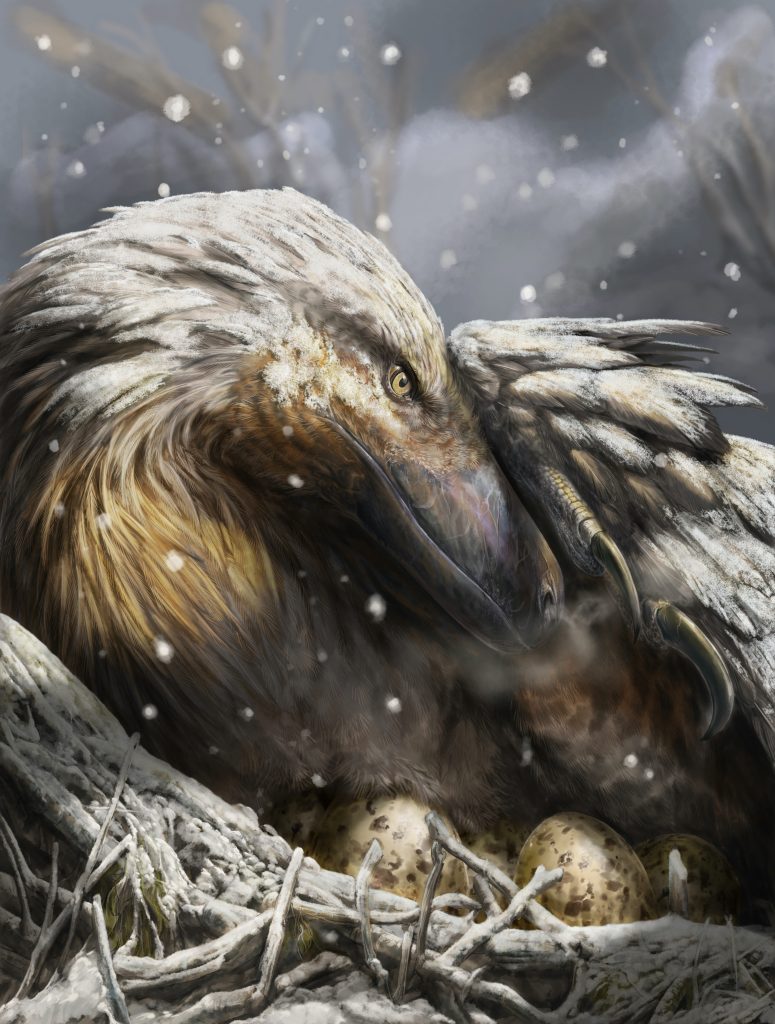
Recent research indicates that some dinosaurs might have developed the ability to internally regulate their body temperature during the early Jurassic period, enabling them to adapt to colder climates and survive environmental challenges. The artist’s impression shows a dromaeosaur, a type of feathered theropod, in the snow. This dinosaur group is popularly known as a raptor. A well-known dromaeosaur is Velociraptor, portrayed in the film Jurassic Park. Credit: Davide Bonadonna/Universidade de Vigo/UCL
A new study led by researchers from UCL and the University of Vigo suggests that the ability to regulate body temperature, a characteristic shared by all modern mammals and birds, may have first developed among certain dinosaurs in the early Jurassic period, approximately 180 million years ago.
A new study led by researchers from UCL and the University of Vigo suggests that the ability to regulate body temperature, a characteristic shared by all mammals and birds, may have first evolved in some dinosaurs during the early Jurassic period, around 180 million years ago.
In the early 20th century, dinosaurs were considered slow-moving, “cold-blooded” animals like modern-day reptiles, relying on heat from the sun to regulate their temperature. Newer discoveries indicate some dinosaur types were likely capable of generating their own body heat but when this adaptation occurred is unknown.
Research Methods and Findings
The new study, published on May 15 in the journal Current Biology, looked at the spread of dinosaurs across different climates on Earth throughout the Mesozoic Era (the dinosaur era lasting from 230 to 66 million years ago), drawing on 1,000 fossils, climate models and the geography of the period, and dinosaurs’ evolutionary trees.
The research team found that two of the three main groupings of dinosaurs, theropods (such as T. rex and Velociraptor) and ornithischians (including relatives of the plant eaters Stegosaurus and Triceratops), moved to colder climates during the Early Jurassic, suggesting they may have developed endothermy (the ability to internally generate heat) at this time. In contrast, sauropods, the other main grouping which includes the Brontosaurus and the Diplodocus, kept to warmer areas of the planet.
Previous research has found traits linked to warm-bloodedness among ornithischians and theropods, with some known to have had feathers or proto-feathers, insulating internal heat.
Evolutionary Implications
First author Dr. Alfio Alessandro Chiarenza, of UCL Earth Sciences, said: “Our analyses show that different climate preferences emerged among the main dinosaur groups around the time of the Jenkyns event 183 million years ago, when intense volcanic activity led to global warming and extinction of plant groups.
“At this time, many new dinosaur groups emerged. The adoption of endothermy, perhaps a result of this environmental crisis, may have enabled theropods and ornithischians to thrive in colder environments, allowing them to be highly active and sustain activity over longer periods, to develop and grow faster and produce more offspring.”
Co-author Dr. Sara Varela, of the Universidade de Vigo, Spain, said: “Theropods also include birds and our study suggests that birds’ unique temperature regulation may have had its origin in this Early Jurassic epoch. Sauropods, on the other hand, which stayed in warmer climates, grew to a gigantic size at around this time – another possible adaptation due to environmental pressure. Their smaller surface area to volume ratio would have meant these larger creatures would lose heat at a reduced rate, allowing them to stay active for longer.”
Broader Implications of the Research
In the paper, the researchers also investigated if sauropods might have stayed at lower latitudes to eat richer foliage unavailable in colder polar regions. Instead, they found sauropods seemed to thrive in arid, savannah-like environments, supporting the idea that their restriction to warmer climates was more related to higher temperatures and then to a more cold-blooded physiology. During that time, polar regions were warmer, with abundant vegetation.
The Jenkyns event occurred after lava and volcanic gasses erupted from long fissures in the Earth’s surface, covering large areas of the planet.
Co-author Dr. Juan L. Cantalapiedra, of the Museo Nacional de Ciencias Naturales, Madrid, Spain, said: “This research suggests a close connection between climate and how dinosaurs evolved. It sheds new light on how birds might have inherited a unique biological trait from dinosaur ancestors and the different ways dinosaurs adapted to complex and long-term environmental changes.”
Reference: “Early Jurassic origin of avian endothermy and thermophysiological diversity in dinosaurs” by Alfio Alessandro Chiarenza, Juan L. Cantalapiedra, Lewis A. Jones, Sara Gamboa, Sofía Galván, Alexander J. Farnsworth, Paul J. Valdes, Graciela Sotelo and Sara Varela, 15 May 2024, Current Biology.
DOI: 10.1016/j.cub.2024.04.051
The study was funded by the European Research Council, the Royal Society, the Natural Environment Research Council, and the Spanish Ministry of Research.
The study involved researchers from UCL, University of Vigo, the University of Bristol, and the Museo Nacional de Ciencias Naturales in Madrid, and received funding from the European Research Council, the Spanish Ministry of Research, the Natural Environment Research Council and the Royal Society.

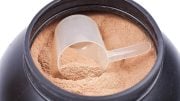
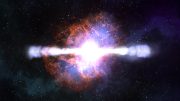
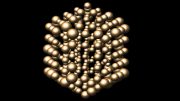



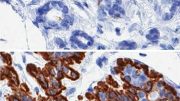

I can tell these school are in Europe because last surviving dinosaur usgator is a native of North Carolina
Spinosauridae dinosaur is a mesocrocodylia .modern crocodilian evolve in desert all modern crocodilian came from Nile crocodile were it is very hot at day very cold at night that way house cat live diverse climate it is well known modern crocodilian is cold hardy it’s special night hunter it’s eye glow like house cat so performance is warm blooded animal like what evidence said all evidence says it’s warm blooded animal historicly
So gator primitive ancestor is coldhardy that not new news that old news because they are same animal .there are no evidence coldbloodness in gator .dinosaur never have feather they do not need it the evidence that they have feather is same evidence that Dolfin and sea snake has it
North Carolina has artic weather every year gator found historicly in Virginia feral gator survive Pennsylvania weather for many years North Carolina has same weather.dinosaur never had feather the evidence they had feather is same evidence Dolfin and sea snake had feather they are no evidence
The dromaeosauridae velicraptor is flightless bird not a dinosaur all maniraptoran and oviraptoran are birds.crocodilian can live diverse climate like one dwarf caiman that live in mountain so some crocodilian die in the cold so do coldhardy mammal all that matter most do
The king of dinosaur modern crocodilian the improve spinosauridae has turbinates a well known warm blooded feature allso found In spinosauridae and bird hip dinosaur
Galimimus dromaeosaur has subcapsular it has temporal bone the periotic bone found in advance animal modern crocodilian lizard mammmal they hear better not found all dinosaur except spinosauridae it has pseudorotunda do not know if they have the bone
I do not think lizard has the bone but has pseudorotunda the bird gator are simular not like mammal it’s unique To bird and crocodilian that why scientist say dinosaur did not come from birds only thecodont with pseudorotunda that lead to periotic bone dinosaur skull to tuatara primitive they lack pseudorotunda the only dinosaur has pseudorotunda is spinosauridae they did not say if has periotic bone that surround inner ear
Euparkia has pseudorotunda but it’s quadrupedal dinosaur they cliam it’s not a dinosaur a archosauriformies dinosaur type like palate tuatara teeth eoraptor they have some thecodont teeth so it’s thecodont and dinosaur pseudosuchus dinosaur lack primitive palate teeth .the links a new protosuchian South Africa academi edu.new look at the origin of bird and crocodile researchgate
Thecodont skull are not fuse like bird gator mammal that why they lack periotic bone it surround the inner ear for great hearing bird gator mammal has great hearing .paleo electronica did not say if spinosauridae has bone that great information but they said had pseudorotunda .the links dibothrosuchus researchgate
Dibothrosuchus and protosuchus has bone the periotic bone is short the skull fusion is close to gator the otic is not well develope in none mesoeucrocodylia the otic notch otic place .bird and mammal gator are unique by skull fusion.quadrate head is link to good hearing dibothrosuchus has 3 .bird gator has 2 .the primitive dinosaur 1 and tuatara and most thecodont .bird lack true antrum mastoidreum
The duct tube are in tomb in bone in crocodilian most reptile they are not because they are primitive gator stapes are in tomb an aquatic feature .protofeather know won knows what protofeather look like how can you find it. Dromaeosaur they cliam it’s not pseudorotunda in 1979 so they right first time 1984 says it’s a pseudorotunda allways was a bird orbital process bird .the deinonychus has odontoid all maniraptoran bird
Allways thought bird has odontoid because it’s fight feature so can get feather ready for fight they need good neck movement and head movement they say only mammal have odontoid then say mesoeucrocodylia has it convergent evolution because death roll gator neck fix no movement gator and sauropod are only dinosaur with bird type neck the neck ribs are reduce not all of them
Fight=flight.
Since not all ribs are reduce in gator the neck is fix does not move but head has good movement like mammal in carnotaurus report on researchgate carnotaurus Bonaparte horned.they say deinonychus atlas is not like carnotaurus but like dinosaur ceratosaurus and talk about odontoid .found bird odontoid report on avesbiologycom .they show common buzzard atlas hollow out a hole there are no holes in atlas of most thecodont
Another mistake deinonychus atlas can not be like ceratosaurus because ceratosaurus is A dinosaur and deinonychus is a bird not a dinosaur
I wanted say carnotaurus atlas is like ceratosaurus a dinosaur neck that lack odontoid the odontoid is advance feature found in mammal gator and birds
Archaeopteryx does not have flight neck the neck is not heterocoelous the Confuciusornis has has heterocoelous and it has 3 mandlbular fenestra like oviraptor a primitive feature allso early modern bird lack heterocoelous they say it deevolution allso has mandlbular joint like dinosaur all the bird lack flight skull like archaeopteryx velociraptor lack dinosaur joint spinosauridae allso lack the joint but it’s a mesoeucrocodylia like the gator they do not have these primitive joint
The early modern bird with dinosaur joint is deevolution some fish has dinosaur joint some jaw are fuse allso deevolution today bird lower jaw is fuse and lack dinosaur joint
Archaeopteryx neck is flight neck because all neck ribs are reduce all maniraptoran oviraptoran are like that most reptile like pterosaur has big neck ribs only reptile reduce neck ribs gator sauropod turtle
It’s waste a time claiming dinosaur is advance that it is more advance than the greatest dinosaur ever the modern crocodilian allso has warmblooded nose not found in dinosaur .dinosaur only show how become modern crocodilian like fusion pterygoid in ankylosaur the ankylosaur basisphenoid is not firmly fuse to sphenoid first tetanuran dinosaur it is not fuse at alll the early bird hip dinosaur the scapula and coracoid are not fuse
Maniraptoran lack suborbital horns the theropod horns over the eyes it’s in every predator theropod because velociraptor ancestor were flying animal these 2 horn were common in theropod extremely big in carnotaurus horns are heavy not good for flight
Some sauropod has odontoid
The lack of flight skull bird like velociraptor archaeopteryx oviraptor jeholornis there ancestor were flying bird or they can fly them self i thought all them were same so simular some had akinetic skull bird like archaeopteryx oviraptor has two head the can do primitive bird kinetic bird like jeholornis were akinetic one head a lot them were akinetic all them had reptile skull reptile palate dinosaur allso had reptile palate a reptile choana .modern bird gator mammal do not have reptile palate these are advance animal
Velociraptor the first bird because it’s ancestor microraptor had big feather the wing were short not a flight wing and it can fly dromaeosauridae skull was akinetic one head it was a bird like jeholornis the popular saying lack of flight skull bird were kinetic is not true